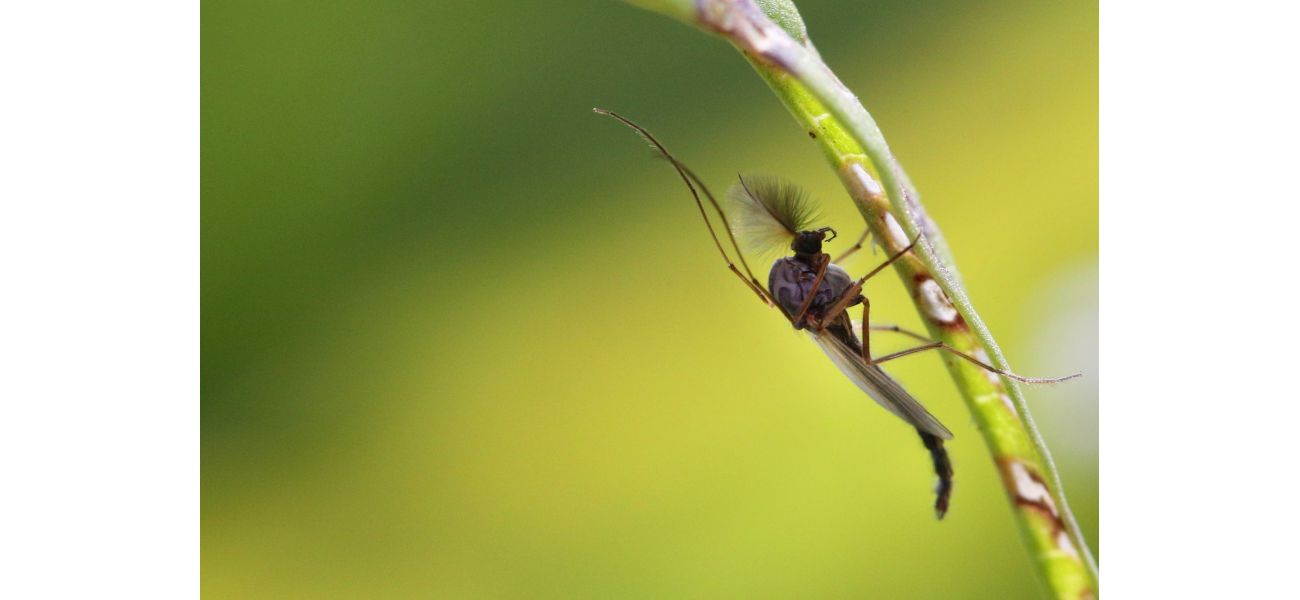New illness 'sloth fever' spreading in Europe - here's what we know.
A 'mysterious threat' has been given this label.
August 29th 2024.

There has been a recent discovery of a rare virus, known as "sloth fever," in three European countries. Experts are warning that this virus, officially called Oropouche virus disease, could potentially become a widespread and unstoppable threat. The name "sloth fever" comes from the belief that these tree-dwelling animals in South America serve as a host for the virus.
Considered a "mysterious threat" in the esteemed Lancet journal, there is limited knowledge about this emerging disease. The first reported deaths from the virus occurred in Brazil last month, both of them being young women in their twenties. The main mode of transmission is through midges, and unfortunately, there is currently no known vaccine or cure for the disease. Traditional prevention methods, such as using nets to sleep under, may not be effective due to the small size of the midges.
In Europe, there have been twelve reported cases in Spain, five in Italy, and two in Germany. All of these individuals had recently traveled to areas where the virus is already present, and there have not been any cases of human-to-human transmission yet. However, the rapid spread of the virus in South America and Cuba has raised concerns, with tourists being advised to take caution.
So, what exactly are the symptoms of "sloth fever"? As the name suggests, fever is a primary symptom. It is often mistaken for another well-known virus, Dengue fever, which is commonly spread by mosquitoes in tropical regions but has also been reported in parts of Europe. Other symptoms include headaches, muscle aches, stiff joints, nausea, vomiting, chills, and sensitivity to light. While most people recover without any lasting effects, there are concerns that the virus could be harmful to unborn babies, potentially resulting in stillbirth, miscarriage, or fetal deformities.
The Oropouche virus, which causes "sloth fever," belongs to the same family of viruses as Zika and Dengue. Symptoms usually appear four to eight days after being bitten by an infected midge and can last for three to six days. Unfortunately, there is no specific medicine to treat the virus, and patients can only be given supportive care. In severe cases, the virus can lead to neuroinvasive diseases like meningitis, according to the Centers for Disease Control and Prevention.
On July 17, the UN issued a warning about the potential negative effects of the virus on unborn babies if their mothers contract the disease while pregnant. In Brazil, there are currently investigations into possible cases of mother-to-child transmission, with four newborns found to have antibodies against the Oropouche virus in their serum samples. Additionally, a woman who contracted the virus during her pregnancy suffered a stillbirth at 30 weeks gestation in June this year.
Some may wonder if we should be worried about "sloth fever." The answer is both yes and no. In a recent article, researchers noted a significant increase in reported cases of Oropouche virus infections over the past 70 years, making it a growing public health concern. Dr. Paul Hunter, a professor of medicine, advises pregnant women to avoid traveling to areas with known cases of the virus. He also believes that there are likely more infections in Europe than have been reported so far.
Dr. Danny Altmann, a Professor of Immunology, urges vigilance as the virus continues to spread in the Americas. He also warns that global warming could lead to an increase in the areas where the midges and mosquitoes, responsible for spreading the virus, can thrive. This is a cause for concern in southern Europe and North America.
In conclusion, the recent discovery of "sloth fever" in Europe has raised alarms, and experts are urging caution and vigilance to prevent its spread. While there is no need to panic, it is essential to stay informed and take necessary precautions, especially for pregnant women. As scientists continue to learn more about this emerging disease, the hope is to find a way to prevent and treat it effectively. This article was originally published on August 13, 2024.
Considered a "mysterious threat" in the esteemed Lancet journal, there is limited knowledge about this emerging disease. The first reported deaths from the virus occurred in Brazil last month, both of them being young women in their twenties. The main mode of transmission is through midges, and unfortunately, there is currently no known vaccine or cure for the disease. Traditional prevention methods, such as using nets to sleep under, may not be effective due to the small size of the midges.
In Europe, there have been twelve reported cases in Spain, five in Italy, and two in Germany. All of these individuals had recently traveled to areas where the virus is already present, and there have not been any cases of human-to-human transmission yet. However, the rapid spread of the virus in South America and Cuba has raised concerns, with tourists being advised to take caution.
So, what exactly are the symptoms of "sloth fever"? As the name suggests, fever is a primary symptom. It is often mistaken for another well-known virus, Dengue fever, which is commonly spread by mosquitoes in tropical regions but has also been reported in parts of Europe. Other symptoms include headaches, muscle aches, stiff joints, nausea, vomiting, chills, and sensitivity to light. While most people recover without any lasting effects, there are concerns that the virus could be harmful to unborn babies, potentially resulting in stillbirth, miscarriage, or fetal deformities.
The Oropouche virus, which causes "sloth fever," belongs to the same family of viruses as Zika and Dengue. Symptoms usually appear four to eight days after being bitten by an infected midge and can last for three to six days. Unfortunately, there is no specific medicine to treat the virus, and patients can only be given supportive care. In severe cases, the virus can lead to neuroinvasive diseases like meningitis, according to the Centers for Disease Control and Prevention.
On July 17, the UN issued a warning about the potential negative effects of the virus on unborn babies if their mothers contract the disease while pregnant. In Brazil, there are currently investigations into possible cases of mother-to-child transmission, with four newborns found to have antibodies against the Oropouche virus in their serum samples. Additionally, a woman who contracted the virus during her pregnancy suffered a stillbirth at 30 weeks gestation in June this year.
Some may wonder if we should be worried about "sloth fever." The answer is both yes and no. In a recent article, researchers noted a significant increase in reported cases of Oropouche virus infections over the past 70 years, making it a growing public health concern. Dr. Paul Hunter, a professor of medicine, advises pregnant women to avoid traveling to areas with known cases of the virus. He also believes that there are likely more infections in Europe than have been reported so far.
Dr. Danny Altmann, a Professor of Immunology, urges vigilance as the virus continues to spread in the Americas. He also warns that global warming could lead to an increase in the areas where the midges and mosquitoes, responsible for spreading the virus, can thrive. This is a cause for concern in southern Europe and North America.
In conclusion, the recent discovery of "sloth fever" in Europe has raised alarms, and experts are urging caution and vigilance to prevent its spread. While there is no need to panic, it is essential to stay informed and take necessary precautions, especially for pregnant women. As scientists continue to learn more about this emerging disease, the hope is to find a way to prevent and treat it effectively. This article was originally published on August 13, 2024.
[This article has been trending online recently and has been generated with AI. Your feed is customized.]
[Generative AI is experimental.]
0
0
Submit Comment





